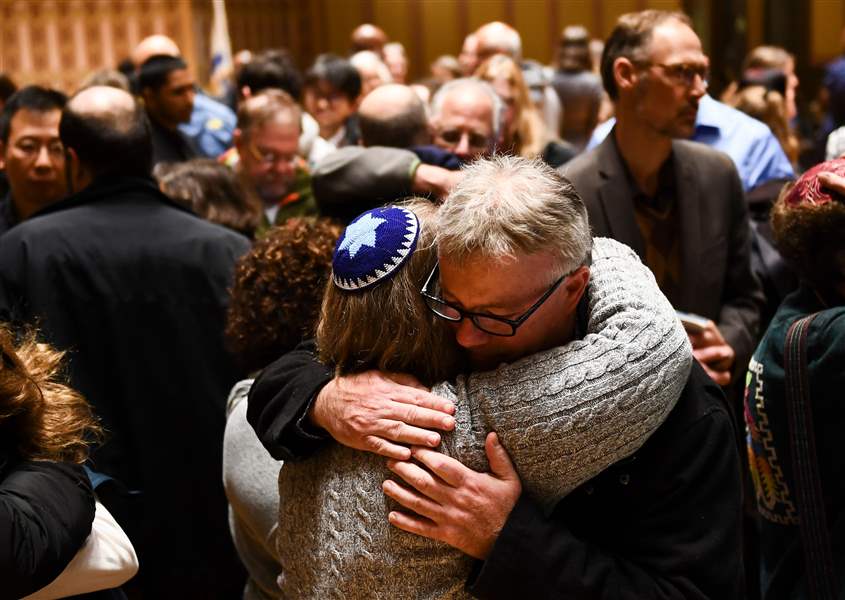
CULTURE SHOCK
The origin of racism
11/9/2018
People hug after a vigil, to remember the victims of the shooting at the Tree of Life synagogue the day before, at the Allegheny County Soldiers Memorial on October 28, 2018, in Pittsburgh, Pennsylvania.
AFP/Getty Images
On a Saturday morning nearly two weeks ago, a gunman armed with an assault-style rifle and three handguns walked into the Tree of Life synagogue in Pittsburgh during a baby-naming ceremony and killed eight men and three women.
After being tracked down and shot by police officers, the alleged gunman told them, “All these Jews need to die.”
Only months before that horrific mass shooting, a published report by the Center for the Study of Hate and Extremism found that hate crimes in the nation’s largest cities rose 12 percent last year; however, a more recent report found that the number of hate crimes and violent hate crimes committed during the first half of 2018 fell overall in six major cities including New York and Los Angeles.
But crime numbers and statistics, and any perceived trends to be gleaned from them, don’t reveal all.
“Sadly, we don’t have a full accounting of the number of hate crimes committed each year,” said Dimitrios Kalantzis, director of communications for Life After Hate, a Chicago-based organization made up of former members of hate groups that is “dedicated to inspiring individuals to a place of compassion and forgiveness, for themselves and for all people.”
“We know that most go unreported. The increase we are seeing can be attributed to a growing awareness both on the part of law enforcement groups and the victims. Documenting these incidents is a big part in combating them.”
In an email interview with The Blade for this column, Kalantzis recently answered some questions about the rise of hate, how it gets started, and what can be done to combat it.
Q: What's the difference between what could be considered casual racism — the 51-year-old white woman in North Carolina who harassed and taunted two black women — and, say, the Proud Boys, and neo-Nazis?
A: We have to recognize that while violent far-right ideology appears to live on the fringes, it’s informed by everyday acts of intolerance. We are obligated to fight for each other’s human rights, to make sure that people aren’t allowed to systematically de-humanize other people. And we have to make sure that everyone, including our leadership, is on board.
Q: What are the primary factors to why someone hates others based on race, religion, sexuality/gender?
A: The war correspondent, Sebastian Junger wrote in his book, Tribe, “Humans don’t mind hardship, what they mind is not feeling necessary.” Most of the time, people turn to positive activities to contribute to the world. Unfortunately, some people are seduced by darker forms of tribalism.
Q. Are there warning signs — obvious or not — that someone is becoming racist and hate-filled? What can be done to help turn him/her around?
A: Engage your children, friends, family without judgment. If you attack the ideology you’ll be attacking their identity. And you’ll get nowhere. As difficult as this can be, we must show compassion. That’s the expression of humanity. That’s ultimately what connects each and every one of us.